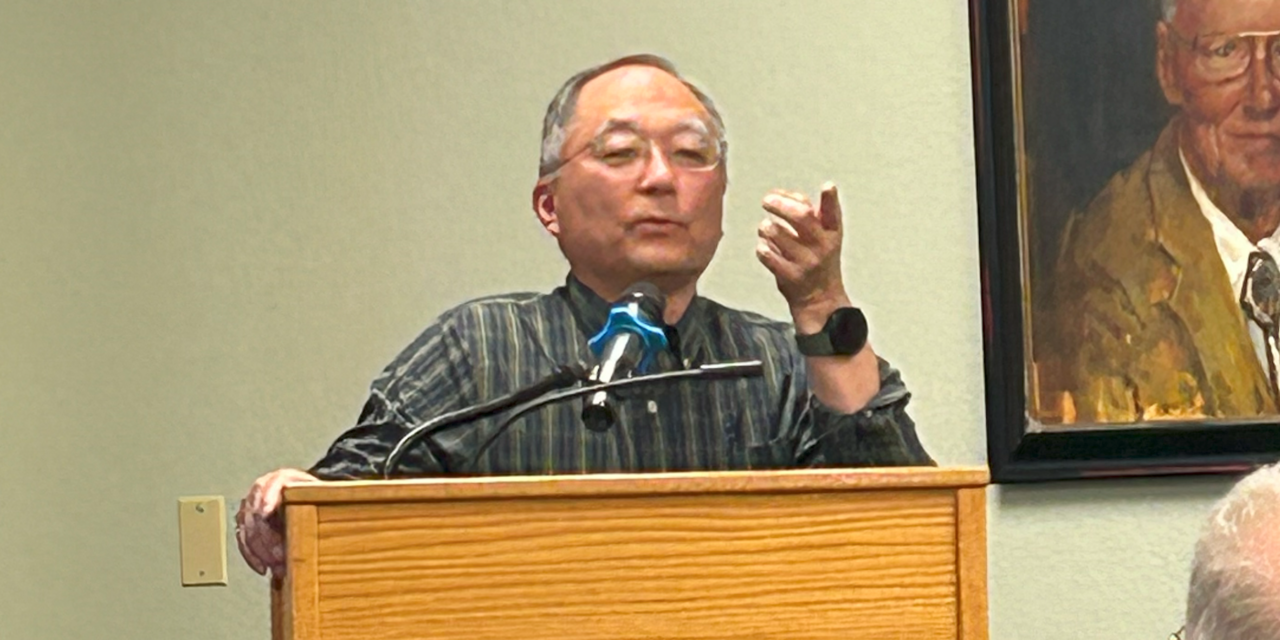The April board meeting of the Upper Arkansas River Water Conservancy District featured a presentation highlighting losses of irrigated farmland in Colorado and the Arkansas River Basin.
Colorado Department of Agriculture Water Policy Advisor Robert Sakata presented the information and engaged Conservancy District staff and board members in a discussion about water and local agriculture.
In addition to his role with the State, Sakata operates a multi-generational farm in the South Platte River Basin and has served on the Colorado Water Quality Control Commission and the Colorado Water Conservation Board.
In his current role as water quality adviser for the state Ag Department, Sakata gathers information about the water challenges faced by agricultural producers and works with farmers, ranchers and agencies to address those challenges.
He shared key facts about agriculture in Colorado, which relies heavily on irrigation water. The ag sector:
- Contributes $47 billion per year to the state economy.
- Stewards 30 million acres of land.
- Manages more than 80% of the state’s water.
- Employs 195,000 people.
From 1997 to 2022, Sakata said, Colorado saw a 32.2% decrease in irrigated acreage, a 1,085,000-acre reduction. Arkansas Basin statistics reveal a 39% loss from 1998 to 2020.*
Sakata said drought has contributed to some of the losses of irrigated land but acknowledged that cities purchasing irrigation water rights and converting them to municipal use is the biggest factor.
“We don’t want a repeat of Crowley County,” he said, referring to Colorado’s poster child for the damage caused by removing water from irrigated farmland, also known as “buy and dry.”
Crowley County borders Pueblo County to the east and once boasted more than 50,000 acres of irrigated farmland that produced alfalfa, barley, tomatoes, strawberries, cantaloupes, corn and enough beets to support a sugar factory in Sugar City.
Orchards once covered more than 4,000 acres between Olney Springs and the town of Crowley. Local agriculture flourished, irrigated with local water and West Slope water paid for by Crowley County farmers and supplied by the Twin Lakes Reservoir and Canal Company, headquartered in Crowley County (Ordway).
In the 1970s, bad weather, bad luck, technology, farm consolidation, and economics created a perfect storm that irreversibly transformed the county for the worse.
Front Range cities ended up with 95 percent ownership of the Twin Lakes Canal and Reservoir Co., “the heart of the system” that brought agriculture-based prosperity to Crowley County.
Sakata’s presentation showed that, by 2022, Crowley County’s irrigated farmland had dropped to 2,000 acres.
Once-fertile farmland is now dusty and grows little more than tumbleweeds, which are known to shut down a local stretch of highway on occasion.
Like the Goodwin Ranch in Howard, Crowley County illustrates the need for revegetation following dry-up of irrigated land. Sakata suggested legislation requiring revegetation might be needed, but local experience attempting to revegetate the Hill Ranch highlights the challenges involved.
Several Upper Ark District officials expressed misgivings about a legislative solution, given the wide variability of the state’s diverse landscape.
Upper Ark District General Manager Greg Felt served as a Chaffee County commissioner when the County recently renegotiated a revegetation requirement with Pueblo West, which purchased Hill Ranch water rights in 2006.
The County issued a 1041 permit that required Pueblo West to revegetate the ranch as a condition of changing the use of the water and removing it from the ranchland.
More than a century of flood irrigation had changed the native soil and made the original revegetation requirement impossible to achieve.
Felt said it took eight years to arrive at an agreement on the revised requirements. “Maybe you need to take it to (Division of Water Resources) … to establish revegetation criteria by regions,” he suggested.
Upper Ark Board Member Brett McMurray, whose ranchland lies nearby Hill Ranch, recommended to Sakata that chemicals not be used for dry-up, as was done on the Hill Ranch.
The discussion covered a wide variety of water and agriculture topics –
- The importance of water for local prosperity.
- Community interests in water transactions.
- Education for ditch managers.
- Water Sharing.
Sakata ended his presentation with two sobering facts.
Ag producers only get about 7.9 cents of every dollar that consumers spend on their products (U.S. Dept. of Agriculture).
Farmers are 3.5 times more likely to die by suicide than the general population (National Rural Health Association).
Instead of 911, anyone can call 988 if they are facing a crisis. Sakata also mentioned growing awareness of a way for anyone facing an especially challenging personal situation to subtly ask for help, or just a meaningful connection.
Ask (or text) a friend, “Do you have eight minutes?”
Photo: Robert Sakata interacts with staff and board members at the Upper Arkansas Water Conservancy District monthly meeting.
*Given drought conditions in 2020, an increase in water availability may have resulted in an increase in irrigated lands in more recent years.









